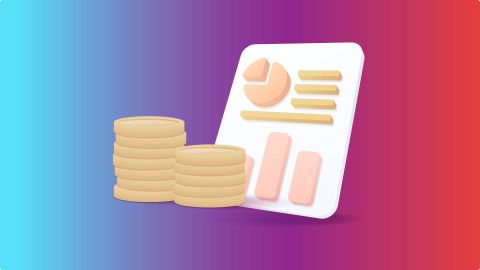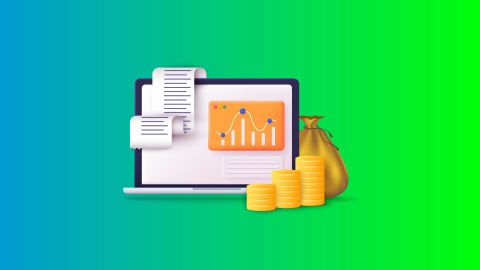Money Market vs Capital Market – Differences with examples
Definition
Think of the money market as a short-term lending hub — it helps businesses quickly raise working capital for everyday needs. The capital market, by contrast, is where companies go for long-term funding by issuing shares and bonds to fuel growth and expansion.
Maturity of instruments
Money market instruments come with short lifespans, typically ranging from a single day to up to a year. Capital market instruments, on the other hand, are meant for the long haul — often with maturity periods extending well beyond a year, and in some cases, no fixed maturity at all.
Purpose served
Money markets solve short-term liquidity challenges. Companies borrow here to manage daily operations and cash flows. Capital markets are about the future — funding new projects, scaling up, or making strategic investments for long-term gains.
Market nature
Money markets tend to be informal and over-the-counter in nature. Capital markets are formal, structured, and heavily regulated — offering more transparency for investors.
Instruments involved
The money market includes short-term debt tools like treasury bills, commercial papers, certificates of deposit, and repos. Capital markets offer long-term investment vehicles like stocks, bonds, mutual funds, and ETFs.
Investor types
You’ll mainly find banks, NBFCs, big corporates, and governments in the money market. In the capital market, retail investors, mutual funds, insurance firms, and even foreign investors come in to buy and sell securities.
Market liquidity
Money market instruments are known for their quick convertibility — ideal for urgent liquidity needs. Capital market investments, like shares or bonds, may take longer to sell, especially at your desired price.
Risk involved
Lower tenure and reliable issuers make money market instruments less risky. Capital market instruments carry more risk due to price fluctuations — but they also offer higher potential returns for those willing to take the ride.
Functions served
The money market provides quick funding options to keep the economy’s wheels turning. Capital markets help build the economy by funding long-term development and business growth.
Return on investment achieved
Returns from money markets are generally stable but modest. Capital markets can deliver much higher returns, but not without the volatility and risk that come with them.
Examples of money market instruments
Wondering what real-life examples fall under money market instruments? Let’s break it down. Treasury bills are one of the most common — short-term debt securities issued by the government at a discount and redeemed at full face value. Certificates of Deposit (CDs) are another these are time deposits issued by banks with a fixed maturity date and interest rate.
Then you have repurchase agreements (repos), where one party sells securities with an agreement to repurchase them later at a higher price. Commercial papers are unsecured promissory notes issued by companies to meet short-term funding needs. These tools make up the backbone of the money market — low-risk, highly liquid, and ideal for parking surplus funds temporarily.
Examples of capital market securities
Capital markets offer a broader playground for long-term wealth creation. Think of equities (stocks) first — these represent ownership in a company and offer the potential for capital gains and dividends. Then come debentures — a form of long-term debt instrument used by companies to borrow money at a fixed rate of interest.
ETFs (Exchange-Traded Funds) also belong here, offering a basket of securities bundled together and traded like stocks. Lastly, derivatives such as futures and options let investors hedge or speculate based on expected price movements. All of these instruments are tailored for long-term investment strategies — with varied levels of risk and return potential. When exploring capital market instruments, mutual funds can serve as a balanced entry point offering exposure to equity, debt, and ETFs with built-in diversification. Open your mutual fund account today
How does the money market work?
The money market is like a fast-moving, short-term lending system. It brings together borrowers who need cash temporarily and lenders with surplus funds. These transactions are mostly done electronically and over the counter, without a formal exchange.
Take Treasury bills as an example. When you buy a T-bill, you’re essentially lending money to the government for a short period. In return, you get your money back with a bit of interest at maturity. It’s a win-win — the government meets its short-term cash needs, and you get a safe place to earn modest returns with high liquidity. The speed and flexibility of this market keep short-term credit flowing smoothly through the financial system.
How does the capital market work?
Think of the capital market as a long-term fundraising engine for businesses and governments. Companies raise money by issuing shares (equity) or bonds (debt), and investors buy these securities hoping for returns — either through price appreciation, dividends, or interest income. These transactions happen through well-regulated stock exchanges and other market platforms.
Unlike the money market, where short-term borrowing is the goal, the capital market is focused on future growth. Companies use the raised capital to fund expansion, innovation, or infrastructure, while investors get the chance to build wealth over time. It’s a deeper, more strategic game where long-term vision often trumps short-term gains.
What are the features of the money market?
The money market is built around short-term needs and high liquidity. Here are some standout features:
Short-term maturity: Instruments typically mature in under a year, making them ideal for quick cash flow management.
High liquidity: Since these instruments are short-term, they’re easy to convert into cash.
Digital transactions: Most deals happen electronically, reducing the need for physical paperwork or middlemen.
Diverse participants: Banks, NBFCs, government institutions, and other financial entities all come together to borrow and lend here.
What are the features of the capital market?
The capital market is designed for long-term investments and bigger returns — but with that comes greater complexity. Here’s what defines it:
Long-term investments: Securities often have no fixed maturity, and investments stretch beyond a year.
Higher return potential: With greater risk comes the possibility of higher gains, especially through equities.
Regulated environment: Institutions like SEBI in India oversee capital market operations, ensuring transparency and investor protection.
Business growth support: Capital raised here funds expansion, innovation, and large-scale projects.
Diverse participation: From foreign investors and retail individuals to financial intermediaries the market includes a broad spectrum of players.
Advantages of investing in the money market
Investing in the money market is often seen as a smart move for those who want to keep things safe, simple, and flexible. Here’s why:
Easy liquidity: You can convert your money market investments into cash quickly when needed.
Low-risk profile: Because these are short-term debt instruments, there’s less exposure to market volatility.
Stable returns: Instruments like certificates of deposit offer fixed interest rates, so you know what to expect.
Accessible: You don’t need to be a big investor to participate — banks and NBFCs offer easy entry points.
If you are looking for alternatives with higher returns but still want manageable risk, mutual funds especially debt and liquid funds can complement money market investments well. Compare mutual fund options now
Advantages of investing in the capital market
The capital market is where investors go to play the long game. It’s not just about steady returns it’s about growth, opportunity, and building wealth over time. Here are some of the key advantages:
Higher return potential: With securities like equities, there is a chance to earn far more than traditional savings tools.
Regulated ecosystem: Since SEBI governs capital markets, you get a level of security and transparency.
Diversification: You can spread your investments across sectors and instruments, helping to manage risk.
Regular income: Dividend-paying stocks and interest-bearing bonds can create a steady income stream.
Types of money markets
The money market is not a single entity it’s a collection of instruments designed for short-term financial transactions. Let’s break down a few key types:
Call money: These are ultra-short-term loans (1–14 days), often used by banks to manage day-to-day liquidity.
Treasury bills: Issued by the government, they are sold at a discount and mature at face value. Very low risk.
Ready forward contracts (Repo): These are essentially short-term loans with collateral a sell-now, buy-back-later arrangement.
Money market mutual funds: These pool investor money to invest in safe, short-term instruments like T-bills and CDs.
Interest rate swaps: Financial contracts where two parties exchange interest payments usually one fixed and one floating to manage risk.
Types of capital market
The capital market operates through two major segments, both of which are crucial to how money flows and grows in the economy:
Primary market: This is where it all begins. When companies want to raise funds, they issue new securities — like stocks or bonds — directly to the public. It’s where IPOs happen, and investors get first dibs on fresh offerings.
Secondary market: This is where those already-issued securities are traded. Think of it like a resale market — you’re buying and selling shares from other investors. It adds liquidity to the market and lets you exit or enter investments easily.
Relevance to economy
Both the money and capital markets are more than just places to invest — they play a major role in how the economy runs:
Feature
|
Money Market
|
Capital Market
|
Role in economy
|
Helps businesses meet short-term cash needs
|
Fuels long-term economic growth by funding infrastructure, innovation, and more
|
Investment focus
|
Safety, liquidity, and short-term gains
|
Long-term investments that can significantly increase wealth
|
Funding access
|
Offers quick funding options for businesses and institutions
|
Provides a stable source of capital for expansion and growth
|
Investor goals
|
Wealth preservation, earning interest
|
Wealth creation through capital appreciation and dividends
|
Risk level
|
Lower, due to short-term and secure instruments
|
Higher, but with greater potential for long-term returns
|
Deciding which market to invest in
So how do you decide whether to go for the money market or the capital market? It all depends on your needs. If you’re looking for low-risk, short-term options where your money remains accessible and safe, the money market is ideal. It’s great for emergency funds or preserving capital without worrying about daily market ups and downs. But if you’re in it for the long haul and want to grow your wealth through higher returns and are comfortable with some level of risk then the capital market could be your playground. There’s no one-size-fits-all answer. Most investors benefit from a combination of both, striking a balance between stability and growth.
Alternatives to money markets and capital markets
Not every investor fits neatly into the money market or capital market bucket. If you’re looking to build a more resilient portfolio, exploring alternatives can be a smart move. These investment options offer diversification and can help balance out market volatility.
Corporate fixed deposits: These offer higher returns than traditional bank FDs and come with varying tenures and credit ratings. They’re a middle ground between safety and yield.
Gold and precious metals: Time-tested assets that hold value, especially during inflation or uncertainty. While they may not generate regular income, they preserve purchasing power.
Real estate: Physical assets like property can generate rental income and appreciate over time. But they require more capital and patience.
Collectibles: Rare art, vintage cars, or even NFTs have become alternative investment vehicles. High risk, but sometimes high reward too — if you know the game.
Key takeaways
Let’s summarise everything in one go. If you’ve been wondering whether to park your money in a treasury bill or invest it in stocks — here’s the breakdown:
Money markets are ideal for short-term liquidity. They let businesses borrow for day-to-day needs and allow investors to earn steady, low-risk returns.
Capital markets are where long-term goals are met. They help companies grow through funding, and investors benefit from long-term wealth generation.
Risk vs reward: Money markets are safer but offer lower returns. Capital markets carry higher risk but can yield higher rewards over time.
Conclusion
At the end of the day, choosing between the money market and the capital market isn’t about which one is better — it’s about which one is right for you. Are you looking for safety, liquidity, and minimal risk? Or are you chasing long-term growth, even if that means occasional market bumps?
A thoughtful investor often uses both. While one part of your portfolio ensures stability and emergency access, the other pushes for long-term value creation. Know your goals. Understand your risk appetite. And always invest with a clear plan.
The mutual fund route allows you to invest in both and compound your yields. You can invest partly in money market mutual funds to enjoy the liquidity and low-risk benefits of the money market. You can balance this with equity mutual funds and their high earning potential. You can leverage the Bajaj Finserv Mutual Funds Platform to browse and compare mutual funds online and choose ones that fit your needs best.







